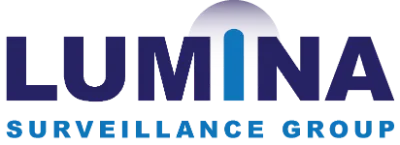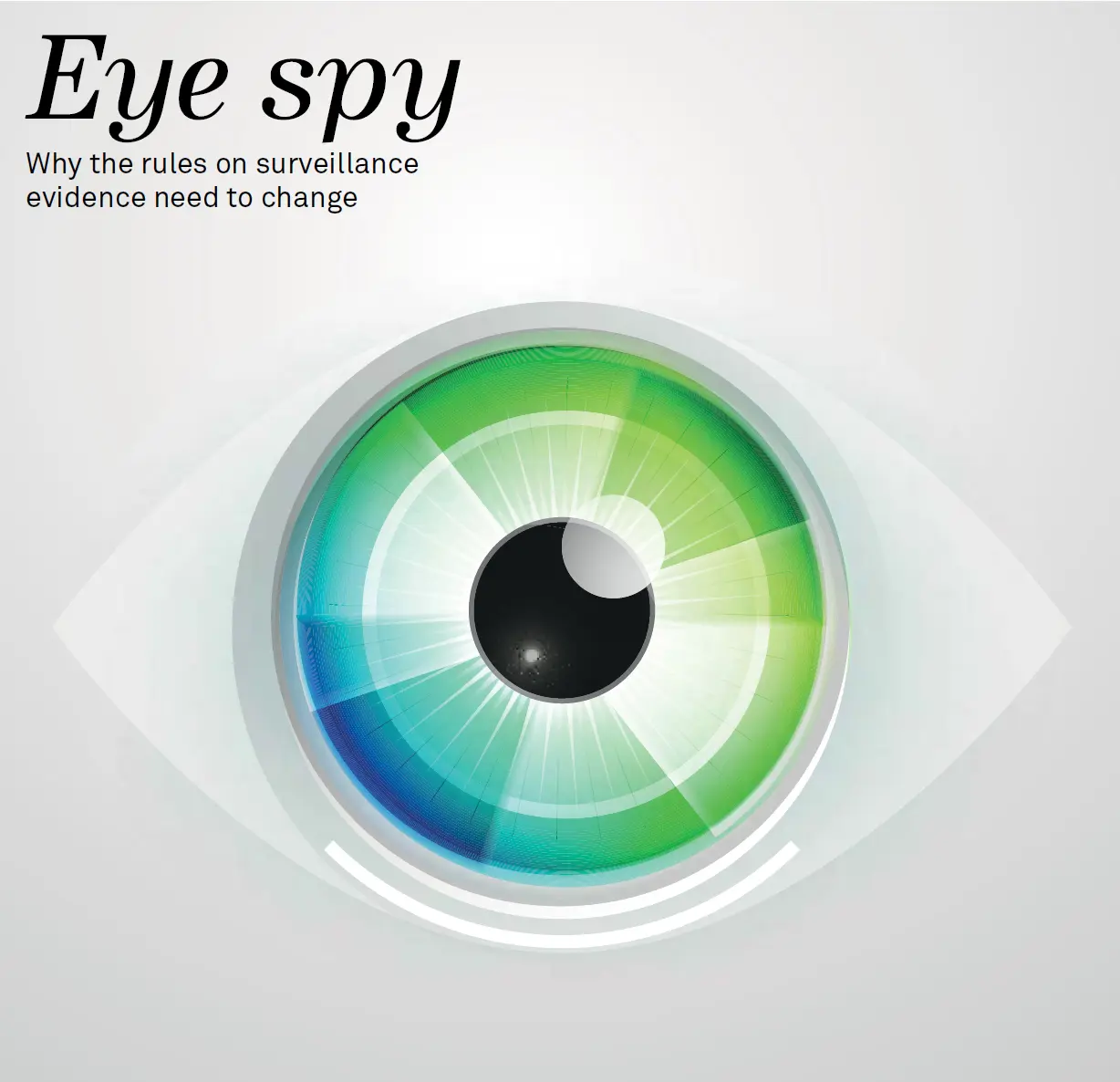As a personal injury claimant lawyer, at some point, you will undoubtedly have received covertly gathered video evidence that purports to show your client carrying out activities over and above their stated limitations. Do you look at that evidence and accept that what it shows is the true version of events? That the surveillance has been carried out both legally and ethically? And that the evidence has not been tampered with or manipulated?
In recent years, the insurance-instructed covert surveillance industry has grown massively, and in the battle to secure or retain lucrative insurance panel-approved contracts, some surveillance firms have resorted to rogue tactics in order to obtain a favourable-looking result for their client. Indeed, in the race to hold on to such contracts, the pressure to perform has become so great that many surveillance firms now operate on a “No film, no fee” arrangement. This pressure to get film or not get paid has inevitably been passed down the supply chain, to be interpreted by the often bonus-incentivised surveillance operatives on the ground as meaning they must not only obtain film, but also the right type of film.
Recent high-profile cases have included Samson v Ali [2012] EWHC 4146 (QB), in which the surveillance firm that gathered the film deliberately speeded up crucial parts of the footage to portray a person with a much greater fluidity of movement than she actually had. Also, the case of Joanna Hill, reported extensively in the press recently, in which the surveillance operatives not only monitored and filmed the claimant but deemed it necessary to carry out detailed and prolonged surveillance on her children—including filming them undressing on the beach. Both cases graphically show that private surveillance operatives will go to extreme lengths to achieve what they wrongly believe their predominantly insurance company clients require.
Presenting edited footage as unedited is as old as the hills, and yet many legal and medical professionals still accept it at face value, with little or no regard as to its integrity. They go on to form or amend opinions based on what has been shown. This can be hugely damaging to a claimant’s case because cleverly edited film can portray a claimant far removed from their actual situation. It can also be bad for defendants—I have seen defendant cases collapse because they relied on video evidence that could not withstand expert scrutiny. It is a matter of duty to the client that video evidence is not just accepted at face value, but that it is reviewed in full and checked against the client’s version of what took place.
Keeping Track
It has long been my concern that a large percentage of surveillance operatives deploy covert vehicle tracking devices to claimants’ cars to ensure that they do not lose the vehicle during the surveillance operation. The practice has, in fact, gone even further—with many surveillance companies substituting a surveillance team with just one operative and a tracking device. Indeed, it is not uncommon for a surveillance operative to deploy multiple tracking devices, enabling them to monitor several claimants.
While this method only gives a partial insight into a claimant’s real situation, once cleverly edited from the comfort of a warm office, the film can soon be made to look like a true reflection. Though surely illegal—not to mention highly unethical—the practice appears to be widespread. It is often well-publicised that fraudulent claimants cost insurance companies—and in turn, you and I—millions of pounds a year. Claimant lawyers have long been wrongly portrayed as defenders of fraudulent claimants, but in reality, they would rather see fraudsters rooted out at the earliest opportunity, as they too are open to huge time and monetary losses should their client be found out to be malingering.
Less well-publicised, but equally as damaging, are the actions of rogue or fraudulent surveillance operatives. If their activities go undetected, this can have a devastating impact on a genuine claimant’s legitimate compensation claim. The financial impact that a rogue surveillance operative or company can have on a defendant lawyer firm, and in turn their insurance client, can also be catastrophic in financial and reputational terms.
Last year’s jailing of private investigators—which was accompanied by a media frenzy—demonstrated that rogue private investigators were operating within the sector. But what was not revealed was the fact that the four private investigators named were, in fact, the very tip of a very large iceberg. That metaphorical iceberg emerged from the sea recently in the form of the Serious Organised Crime Agency’s (SOCA) ‘SOCA 100 list,’ and its enormous girth caused the investigative, legal, and insurance worlds to shudder. The revelation that, previously hidden beneath the waterline, was a plethora of insurance and legal heavyweights which routinely used the services of rogue private investigators has caused the industry to sit up and take notice.
It remains to be seen if the list will ever be made public—and at the time of going to press, the position on this is still uncertain. But regardless of whether or not it is published, the message is clear: there is a substantial rogue element within the privately instructed investigative arena.
I am not sure if it is the case that defendant lawyers, on behalf of their insurer clients, place their instructions in the knowledge that the investigators or their agents would act unlawfully. I believe that it is entirely possible that the private investigator could act illegally while the client and instructing solicitor remain entirely unaware of that illegality. But such naivety cannot continue.
The current situation is that there is no law within the surveillance industry; indeed, many consider that it borders on lawless. The simple fact is that anyone can instruct any firm or individual to go out and obtain video evidence. There is no licensing, no regulation, and no obligation to gather the evidence in a fair and proper manner.
A Better Approach
It seems to me that the currently accepted methods in relation to gathering and serving video evidence are out of date, born in an era when it was generally accepted that the camera never lied. The current situation is that both the camera and its operators are frequently lying, manipulating evidence, and presenting a picture that is often far from what took place.
I believe the only solution to what is a rapidly growing problem is a fundamental change in the way in which surveillance evidence is instructed, gathered, and presented. While both insurance companies and their legal representatives must adhere to strict guidelines in almost every other area, there is quite simply no legislation when it comes to instructing the performance of covert surveillance.
Surveillance should be a means of obtaining a true and fair reflection of an individual’s situation. I believe a much fairer and more transparent way of doing this would be for the defendant lawyers—when they suspect that a claim may be fraudulent—to obtain secret permission from a procedural judge to carry out surveillance. Exact dates should be given as to when the surveillance would take place, which would eliminate the practice of only serving selected surveillance days as evidence. It would also eradicate the practice of drip-feeding evidence into proceedings.
In order for the surveillance evidence to be considered, it would have to be presented in its entirety, with everything from the original letter of instruction through to the entire unedited footage, along with all documentation, including handwritten notes, surveillance logs, witness statements, and confirmation of data compliance.
The surveillance evidence would remain confidential until it had been concluded, but it should then be put into the open arena so that both parties can make informed decisions based on it. At the moment, it seems to me to be completely unfair that if evidence is gathered that shows a claimant in a light that does not fall in favour of the instructing party, then it can simply be discarded.
The deliberate cherry-picking of surveillance days when a claimant may have been active, and the omission of any days where the person may have been displaying signs confirming their limitations, has no place in a legal system that prides itself on equality and fairness.
The Need for Reform
The government has recently announced that, as of autumn 2014, licensing will be brought in to regulate the activities of private investigators, and it will become a criminal offence to operate unlicensed, with large fines or even imprisonment the suggested deterrent to doing so.
What worries me is that much of the attention is being focused on matters such as data compliance and correct procedure. While both are, of course, highly relevant, it is not beyond the realms of reason to see a situation where a surveillance operative can continue to operate unethically, yet within the boundaries—and possibly protection—of the law, because he has completed a data protection and compliance questionnaire.
In my view, it is not the regulation or licensing of the private investigator that needs addressing, but the law which dictates the way in which surveillance evidence is gathered and presented.
An article by Jeff Simm of Lumina Surveillance Group

